Premenstrual dysphoric disorder (PMDD) causes severe mood disruptions, anxiety, and depression in the days before the period. These symptoms can be debilitating and interfere with work, relationships, and daily functioning.
Microdosing cannabis offers relief for PMDD symptoms without the intense psychoactive effects that could complicate your already challenging premenstrual phase.

Research shows that hormonal fluctuations during the menstrual cycle affect the endocannabinoid system (ECS), which regulates mood, pain perception, and stress responses. When progesterone drops before the period begins, ECS activity changes dramatically. This disruption contributes to the severe emotional symptoms characteristic of PMDD. Cannabis compounds interact with ECS receptors to stabilize these fluctuations and provide symptom relief.
Our THC edibles contain precise microdoses starting at 2 mg THC per serving, which gives you control over symptom management. These low-dose formulations provide therapeutic benefits for mood, pain, and sleep without impairment, so you can function normally even during your most difficult premenstrual days.
PMDD and the endocannabinoid system
PMDD affects 3–8% of menstruating women and goes far beyond typical premenstrual discomfort. The condition causes severe depression, anxiety, irritability, and mood swings that begin during the luteal phase of your cycle (the two weeks before a period) and resolve within days of your period starting.
The exact mechanism behind PMDD remains unclear, but research points to abnormal brain responses to normal hormonal changes. When progesterone levels drop before menstruation, your brain's sensitivity to mood-regulating neurotransmitters changes.
Studies show that ECS activity fluctuates throughout the menstrual cycle in response to estrogen and progesterone levels. During the luteal phase, when PMDD symptoms emerge, endocannabinoid signaling changes in brain regions responsible for mood regulation, stress response, and emotional processing.
Cannabis compounds work with your existing ECS receptors to stabilize these fluctuations. THC and CBD don't eliminate hormonal changes, but they support the neural systems affected by those changes.
Cannabis provides targeted relief for PMDD symptoms
Cannabis can address the most disabling aspects of PMDD through multiple mechanisms. The condition's psychological symptoms often overshadow physical discomfort, so mood stabilization is the primary treatment goal, though cannabis can help with other PMDD symptoms such as sleep disturbances and pain.
Mood instability and depression
The severe depression that accompanies PMDD differs from general sadness or irritability. Women with PMDD report feeling hopeless, worthless, and emotionally numb during their luteal phase. This depression lifts within days of the period starting, creating a predictable but distressing monthly cycle.
In a 2013 study, CBD has demonstrated antidepressant properties. The compound interacts with serotonin receptors and promotes neuroplasticity in brain regions affected by depression. Low-dose THC can enhance mood without causing euphoria or cognitive impairment that might worsen emotional instability.
Our Bliss gummies contain 5 mg THC and 5 mg CBD per serving to provide balanced mood support without intense psychoactive effects.
Anxiety and emotional reactivity
PMDD causes severe anxiety that differs from everyday stress. Women report feeling overwhelmed by minor problems, experiencing panic attacks, and feeling constantly on edge. This heightened anxiety makes normal daily activities feel impossible to manage.
Research shows CBD reduces anxiety through multiple pathways. The compound affects serotonin and GABA receptors, both involved in anxiety regulation. A 2024 study found that CBD significantly reduced menstrual-related anxiety, with 91% of participants reporting symptom improvement.
Cannabis microdoses help regulate your stress response without sedation or impairment. Many women report feeling calmer and more capable of handling challenges during their typically difficult premenstrual days.
Physical symptoms: Pain, sleep, and appetite
While mood symptoms define PMDD, physical discomfort compounds the condition's impact. Cramping, breast tenderness, bloating, sleep disruption, and appetite changes can make the luteal phase feel unmanageable.
Cannabis addresses these physical symptoms through anti-inflammatory and analgesic properties. THC reduces pain perception, while CBD targets inflammation at the cellular level. Both compounds improve sleep quality by supporting natural sleep cycles rather than forcing artificial drowsiness.
Our Sleep Plus gummies provide 2 mg THC, 25 mg CBD, and 3 mg melatonin for comprehensive support when PMDD disrupts your rest. For pain and inflammation, Relax Plus gummies offer 5 mg THC and 25 mg CBD per serving without heavy sedation.
Microdosing prevents cannabis side effects with PMDD
Cannabis has a biphasic effect (low and high doses produce opposite results). Low THC doses reduce anxiety and stabilize mood, while higher doses can increase paranoia and emotional instability. This makes dosing particularly important for PMDD, where emotional regulation is already compromised.
Microdosing typically involves 2–5 mg of THC combined with equal or higher amounts of CBD. These doses provide therapeutic benefits without the psychoactive intensity that could worsen mood swings or anxiety.
Cannabis consumption methods for PMDD
Edibles offer the most precise dosing and longest-lasting effects, typically 4–8 hours of symptom relief. This extended duration provides stability during your most difficult premenstrual days without requiring frequent redosing.
Cannabis beverages work faster than hard edibles while still providing measured doses. This makes them useful when symptoms appear suddenly or worsen throughout the day.
Buzz Drops contain 2.5 mg THC and 2.5 mg CBD per dropper, so you can add precise microdoses to any beverage for flexible symptom management.
Smoking and vaping work quickly but provide shorter relief (2–3 hours) and make precise dosing difficult. The rapid onset can also trigger anxiety in some women, particularly during the luteal phase when emotional sensitivity increases.
How to microdose cannabis for PMDD relief
Start with the lowest possible THC dose (2 mg or less) combined with a higher CBD dose (5–25 mg) to maximize therapeutic benefits while minimizing psychoactive effects. Begin dosing at the first sign of luteal phase symptoms, typically 10–14 days before your expected period.
Product QUIZ
Need help deciding what product is best for you? Take our quiz, just three questions until your perfect match!
Matching cannabis products to PMDD symptoms
Different cannabinoid ratios target different symptom clusters:
- Mood and anxiety: Balanced 1:1 or 2:1 CBD:THC ratios provide emotional stability without impairment. Bliss gummies contain 5 mg each of THC and CBD for gentle mood support throughout the day.
- Sleep disruption: Higher CBD ratios with 2–3 mg THC promote restful sleep when PMDD causes insomnia or night waking. Sleep Plus gummies include melatonin for comprehensive sleep support.
- Pain and inflammation: Higher CBD doses (25 mg) with low THC (2–5 mg) target cramping and breast tenderness. Relax Plus gummies provide anti-inflammatory benefits with mild relaxation.
- Severe emotional symptoms: Very low THC doses (2.5 mg) prevent anxiety while CBD (5–25 mg) stabilizes mood. Buzz Drops allow you to adjust your dose throughout the day based on symptom severity.
Advanced strategies for PMDD cannabis use
Once you establish your baseline dosing, these techniques optimize cannabis use for long-term PMDD management:
- Symptom tracking: Record doses alongside symptom severity and menstrual cycle phase to identify patterns and optimal timing. This helps you anticipate difficult days and adjust doses proactively.
- Cycle-based dosing: Many women find their cannabis needs change throughout the luteal phase. Start with lower doses when symptoms first appear, then increase slightly during your most difficult days (typically 3–5 days before a period).
- Product rotation: Use different products for different situations. Keep THC drinks for social situations when mood symptoms feel overwhelming, sleep gummies for nighttime relief, and balanced daytime formulas for work days.
- Combination with lifestyle interventions: Cannabis works synergistically with exercise, stress management techniques, and dietary changes. It enhances these practices but doesn't replace them.
The goal isn't to feel "high" but to restore the emotional stability PMDD has disrupted. Our microdosed products provide targeted relief that fits into your existing routines without compromising your professional or personal life.
Shop our THC collection and discover how cannabis microdosing can help you manage PMDD symptoms with greater comfort and emotional balance.
Cannabis for PMDD FAQ
PMDD requires a multi-faceted approach that addresses hormonal imbalances, inflammation, and neurotransmitter dysregulation. Cannabis microdosing works alongside dietary changes, stress management, and targeted supplements to provide comprehensive relief.
Start with anti-inflammatory nutrition. Reduce sugar, caffeine, and alcohol during your luteal phase, as these compounds worsen mood swings and anxiety. Increase omega-3 fatty acids, magnesium, and B vitamins, which support neurotransmitter production and hormonal balance.
Cannabis fits into this holistic framework by supporting your endocannabinoid system, which regulates mood, pain, and stress responses. Microdoses of 2–5 mg THC combined with 5–25 mg CBD provide therapeutic benefits without impairment. Our Bliss gummies contain balanced ratios for daily mood support.
Regular exercise reduces PMDD severity by improving endocannabinoid tone and reducing inflammatory markers. Even moderate activity during the luteal phase helps stabilize mood and reduce physical symptoms.
Cognitive behavioral therapy (CBT) and mindfulness practices address the psychological aspects of PMDD. Cannabis can enhance these interventions by reducing anxiety that interferes with therapy effectiveness.
PMDD rage stems from altered brain chemistry during the luteal phase, when progesterone withdrawal affects GABA and serotonin signaling. This creates intense irritability and anger that feels impossible to control.
CBD reduces emotional reactivity by modulating serotonin receptors and promoting neuroplasticity in brain regions responsible for emotional regulation. A low dose of THC enhances these effects without causing euphoria or further mood destabilization.
Combine cannabis with calming techniques. Deep breathing, cold water on your face, and removing yourself from triggering situations work synergistically with cannabinoids to reduce emotional intensity.
Track your rage patterns throughout your cycle to identify when symptoms typically peak. Pre-emptive dosing 30–60 minutes before these predictable difficult periods prevents rage from escalating rather than trying to manage it after it appears.
Hybrid strains balance the mood-lifting properties of sativa with the physical relaxation of indica, making them effective for PMS symptoms that include both emotional and physical discomfort.
Strain classifications become less relevant with microdosed edibles. The precise cannabinoid ratios in our products provide more reliable effects than strain-based approaches, which vary significantly between batches and producers.
Microdosed edibles eliminate the guesswork of strain selection while providing consistent, measurable relief for PMS symptoms. Start with the lowest dose and adjust based on your specific symptom patterns throughout your cycle.
Top Sellers
New? Start with our Ultimate Sampler!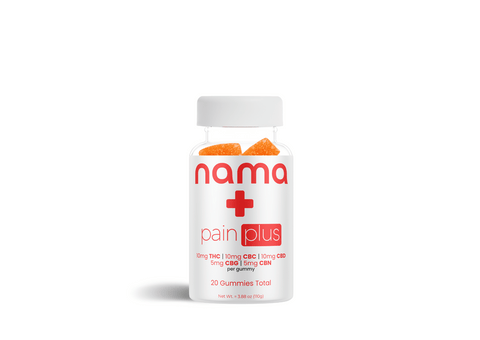

THC: 10 mg | CBC: 10 mg | CBD: 10 mg | CBG: 5 mg | CBN 5mg
Resources
Brents LK. Marijuana, the Endocannabinoid System and the Female Reproductive System. Yale J Biol Med. 2016 Jun 27;89(2):175-91. PMID: 27354844; PMCID: PMC4918871.
Mishra S, Elliott H, Marwaha R. Premenstrual Dysphoric Disorder. [Updated 2023 Feb 19]. In: StatPearls [Internet]. Treasure Island (FL): StatPearls Publishing; 2025 Jan-. Available from: https://www.ncbi.nlm.nih.gov/books/NBK532307/
Patel S, Hillard CJ. Role of endocannabinoid signaling in anxiety and depression. Curr Top Behav Neurosci. 2009;1:347-71. doi: 10.1007/978-3-540-88955-7_14. PMID: 21104391; PMCID: PMC3808114.
Hill MN, Gorzalka BB. The endocannabinoid system and the treatment of mood and anxiety disorders. CNS Neurol Disord Drug Targets. 2009 Dec;8(6):451-8. doi: 10.2174/187152709789824624. PMID: 19839936.
Further reading
How long do THC drinks last before they expire?
Best cannabis strains for social anxiety
Microdosing cannabis for cervical cancer
nama CBD FDA & legal disclaimer
Our cannabis products are not intended to diagnose, treat, cure, or prevent any disease. They are not a replacement for prescription medications and have not been evaluated by the Food and Drug Administration (FDA).
The information provided on this website does not and is not intended to constitute legal advice or any statements of the status of any laws. Any information, content, and materials available on this site are for general informational purposes only and are not intended to be relied upon for any purpose.
Readers of this website should contact their attorney to obtain advice concerning any particular legal matter, including decisions on what products are, or are not, legal to sell, possess, or consume. No reader, user, or browser of this site should act or refrain from acting based on information on this site without first seeking legal advice from their counsel in the relevant jurisdiction.
Only your attorney can provide assurances that the information contained herein—and your interpretation of it—is applicable or accurate for your particular situation. Use of, and access to, this website or any of the links or resources contained within the site do not create an attorney-client relationship between the reader, user, or browser, and website authors, contributors, contributing law firms, or committee members and their respective employers.
About
Learn
Join us on this journey

© Copyright 2025 nama Products LLC. All Rights Reserved.
†These statements have not been evaluated by the Food and Drug Administration. These products are not intended to diagnose, treat, cure or prevent any disease. All information presented here is not meant as a substitute for or alternative to information from health care practitioners. Please consult your health care professional about potential interactions or other possible complications before using any product.
††The information provided on this website does not, and is not intended to, constitute legal advice or any statements of the status of any laws. Any information, content, and materials available on this site are for general entertainment purposes only, and are not intended to be relied upon for any purpose.

By clicking ‘Yes,’ you agree to our
Terms & Conditions and Privacy Policy
123 John Doe Street
Your Town, YT 12345
Store Hours
Sun: Closed
Mon-Fri: 9:00 - 17:00
Sat: 10:00 - 13:00
What to expect at pickup
Closed
Closing at 5pm
Closing at 5pm
Closing at 5pm
Closing at 5pm
Closing at 5pm
Closing at 1pm

![Buzz Drops™ [THC Drink Drops]](http://www.namacbd.com/cdn/shop/files/nama_thc_buzz_drops.png?v=1711412866&width=480)
![Buzz Drops™ [THC Drink Drops]](http://www.namacbd.com/cdn/shop/files/buzz-drop-wine-comparison.png?v=1736882023&width=480)
![Buzz Packs™ [THC and CBD Powder Drink Mix]](http://www.namacbd.com/cdn/shop/files/nama_buzz_packs_thc_drink_pack_white_background.png?v=1741884660&width=480)
![Buzz Packs™ [THC and CBD Powder Drink Mix]](http://www.namacbd.com/cdn/shop/files/Buzz_Packs_Label.png?v=1741884660&width=480)
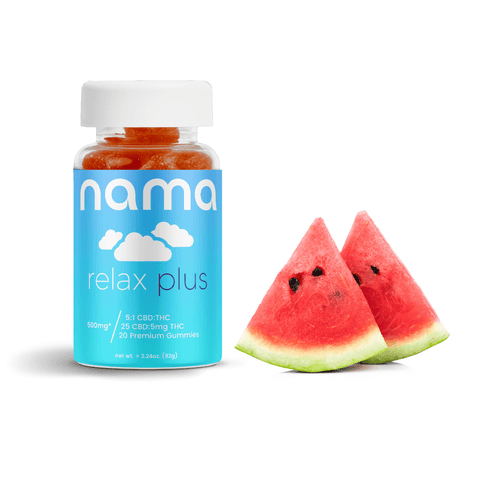
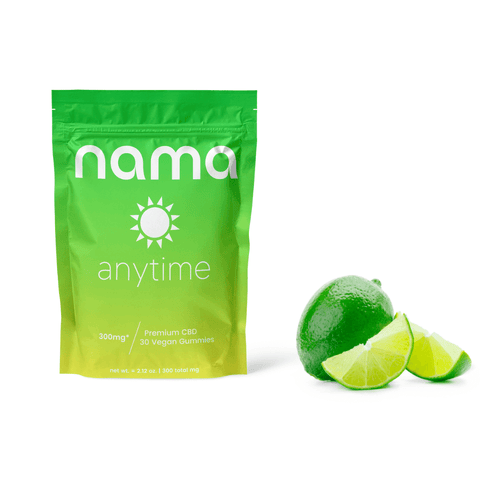
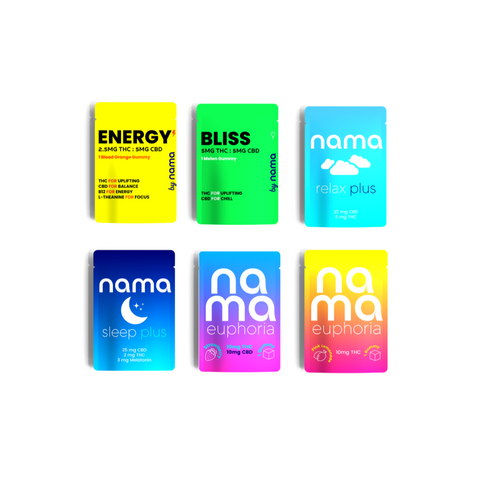
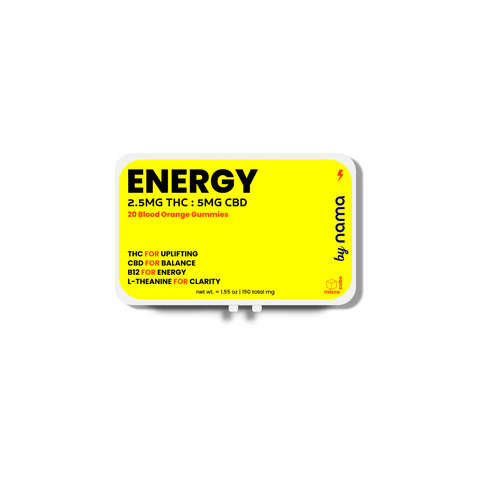
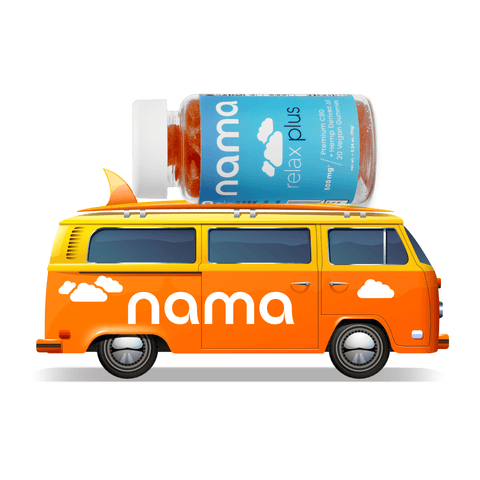
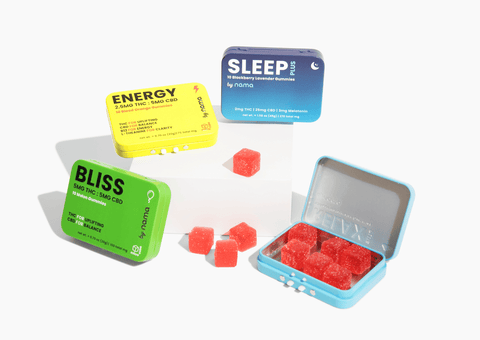
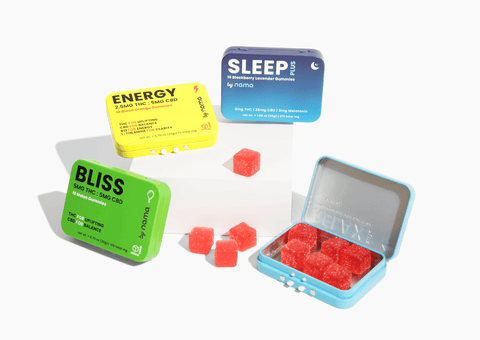

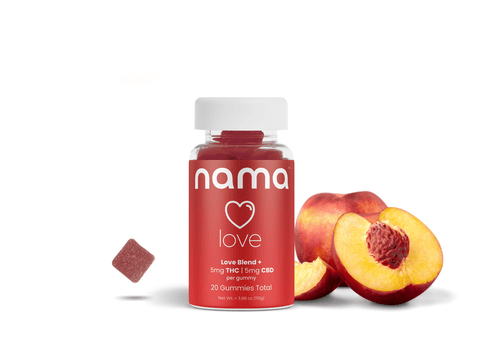
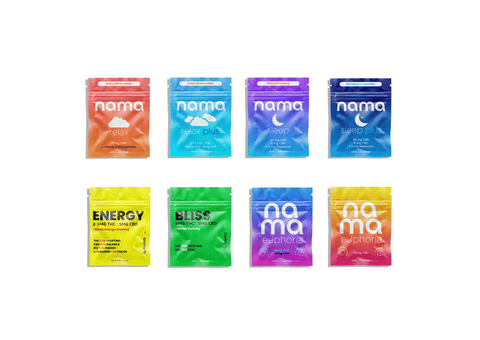

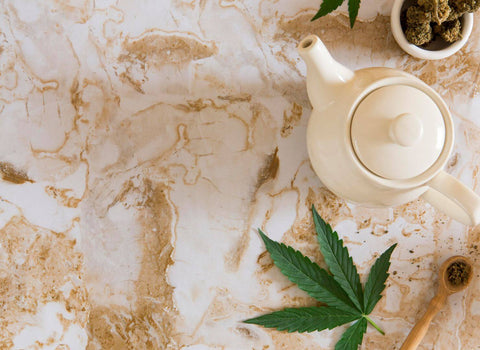


Comments (0)
There are no comments for this article. Be the first one to leave a message!